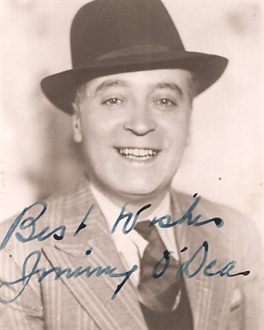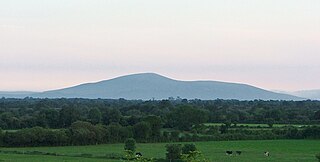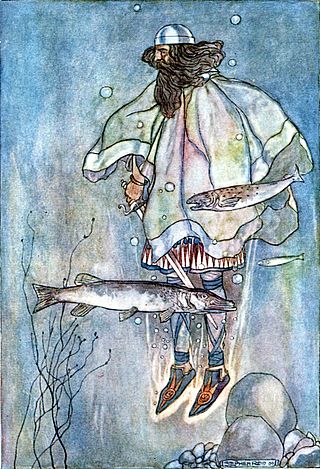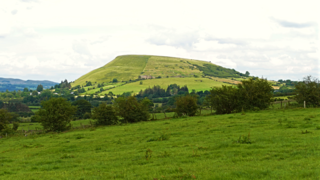
Sir Thomas Sean Connery was a Scottish actor. He was the first actor to portray fictional British secret agent James Bond on film, starring in seven Bond films between 1962 and 1983. Connery originated the role in Dr. No (1962) and continued starring as Bond in the Eon Productions films From Russia with Love (1963), Goldfinger (1964), Thunderball (1965), You Only Live Twice (1967) and Diamonds Are Forever (1971). Connery made his final appearance in the franchise in Never Say Never Again (1983), a non-Eon-produced Bond film.

A leprechaun is a diminutive supernatural being in Irish folklore, classed by some as a type of solitary fairy. They are usually depicted as little bearded men, wearing a coat and hat, who partake in mischief. In later times, they have been depicted as shoe-makers who have a hidden pot of gold at the end of the rainbow.

James Augustine O'Dea was an Irish actor and comedian.

John Joseph MacGowran was an Irish actor, known for being one of the foremost stage interpreters of the work of Samuel Beckett, as well as his film roles as Professor Abronsius in The Fearless Vampire Killers (1967), Juniper in How I Won the War (1967), and Burke Dennings in The Exorcist (1973), in which MacGowran died during production.

The Galway hooker is a traditional fishing boat used in Galway Bay off the west coast of Ireland. The hooker was developed for the strong seas there. It is identified by its sharp, clean entry, bluff bow, marked tumblehome and raked transom. Its sail plan consists of a single mast with a main sail and two foresails. Traditionally, the boat is black and the sails are a dark red-brown.

Slievenamon or Slievenaman is a mountain with a height of 721 metres (2,365 ft) in County Tipperary, Ireland. It rises from a plain that includes the towns of Fethard, Clonmel and Carrick-on-Suir. The mountain is steeped in folklore and is associated with Fionn mac Cumhaill. On its summit are the remains of ancient burial cairns, which were seen as portals to the Otherworld. Much of Slievenamon's lower slopes are wooded, and formerly most of the mountain was covered in woodland. A low hill attached to it, Carrigmaclear, was the site of a battle during the Irish Rebellion of 1798.

Another Time, Another Place is a 1958 British melodrama film directed by Lewis Allen and starring Lana Turner, Barry Sullivan and Sean Connery. The film is based on Lenore J. Coffee's 1955 novel Weep No More.
Darby O'Gill is a fictional Irishman who appears in the writings of Irish author Herminie Templeton Kavanagh, including her books Darby O'Gill and the Good People (1903) and Ashes of Old Wishes and Other Darby O'Gill Tales (1926).

Janet Munro was a British actress. She won a Golden Globe Award for her performance in the film Darby O'Gill and the Little People (1959) and received a BAFTA Film Award nomination for her performance in the film Life for Ruth (1962).

Denis O'Dea was an Irish stage and film actor.

Fergus mac Léti was, according to Irish legend and traditional history, a king of Ulster. His place in the traditional chronology is not certain - according to some sources, he was a contemporary of the High King Conn of the Hundred Battles, in others of Lugaid Luaigne, Congal Cláiringnech, Dui Dallta Dedad and Fachtna Fáthach.

Kieron Moore was an Irish film and television actor whose career was at its peak in the 1950s and 1960s. He may be best remembered for his role as Count Vronsky in the film adaptation of Anna Karenina (1948) with Vivien Leigh.
Lawrence Edward Watkin was an American writer and film producer. He was known primarily as a scriptwriter for a series of 1950s Walt Disney films.

Third Man on the Mountain is a 1959 American family adventure film by Walt Disney Productions, directed by Ken Annakin and starring Michael Rennie, James MacArthur and Janet Munro. Set during the golden age of alpinism, its plot concerns a young Swiss man who conquers the mountain that killed his father. It is based on Banner in the Sky, a James Ramsey Ullman 1955 novel about the first ascent of the Citadel, and was televised under this name.
The death coach is part of the folklore of Northwestern Europe. It is particularly strong in Ireland where it is known as the cóiste bodhar, also meaning "silent coach", but can also be found in stories from British and American culture. It is usually depicted as a black coach being driven or led by a dullahan.

Albert Sharpe was a Northern Irish stage and film actor.

The National Leprechaun Museum is a privately owned museum dedicated to Irish folklore and mythology, through the oral tradition of storytelling. It is located on Jervis Street in Dublin, Ireland, since 10 March 2010. It claims to be the first leprechaun museum in the world. The Irish Times has referred to it as the "Louvre of leprechauns".

Knocknashee is a 276-metre (906 ft) Marilyn in the Ox Mountains, County Sligo, Ireland.

Nora O'Mahoney (1912–1989) was an Irish actress and lay missionary, known for Molly Malloy in Darby O'Gill and the Little People (1959) and as Godmother in Wanderly Wagon (1967–1982).
















